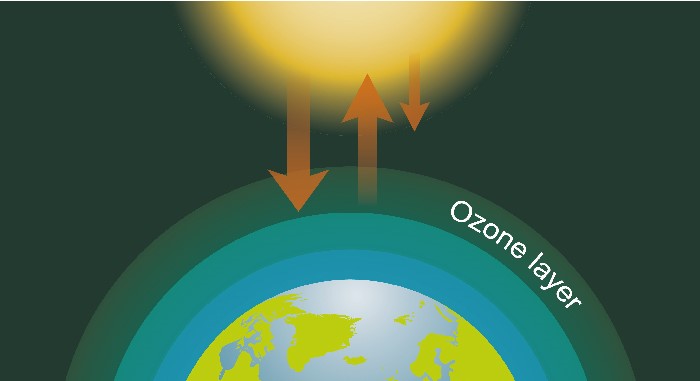A violent solar flare exploded from the surface of the sun, flinging X-rays and a gargantuan cloud of high-energy material in all directions. Eight minutes after the eruption, the X-rays slammed into the Earth’s upper atmosphere, knocking out emergency radio communications in the Caribbean. Radio signals bounce off the Earth’s upper atmosphere, called the ionosphere, which allows the radio waves to travel great distances. But when the atmosphere is energized by solar activity, the radio signals are drowned out in a crackle of static. The blackout lasted into the afternoon, knocking out high-frequency radio waves used by airplanes, ships, emergency crews and ham operators.
In all, the sun lashed out a dozen times that week, producing flares that impeded radio communications in the battered islands of the Caribbean. There was pretty much nothing anyone could do, and authorities barely saw this solar storm coming. But scientists may soon know more about how to predict space weather. In 12 August 2018, NASA has launched the Parker Solar Probe, which will fly into the sun’s outer atmosphere to sample the star’s exhalations. The probe could answer some of the most burning questions in solar science — and help scientists protect human communication systems and electric grids before they get fried.
The sun may look placid from where we stand, but there’s a hellacious inferno roiling at its core, and it regularly spews out material that can wreak havoc on Earth. The entire sun is covered in convection cells, which bring hot material up to the surface in the same way that bubbles circulate in a pot of boiling water, explained Craig DeForest, a solar physicist at the Southwest Research Institute. The hot areas spread out, radiate sunlight and generate a magnetic field, and then cool and sink again. The convection cells are each the size of Texas, and the sun has a million or so of them at any given time. The scale boggles the mind, and "it produces a heck of a racket, and just a sheer volume of energy," DeForest said.
There’s still a lot scientists don’t understand about the sun, and that makes it hard for them to make good predictions about when and where it will spew material into space. The temperature and the size of the sun’s atmosphere, called the corona, make no sense according to the laws of physics as we currently understand them. The corona is huge and diaphanous, yet super hot, much hotter than the sun’s visible surface, which doesn’t make sense: It’s as if the air around a campfire was much hotter than the flames themselves, a violation of basic thermodynamics. Exactly how the sun unleashes violent bubbles of energy and magnetism, called coronal mass ejections, is also a mystery. And we still don’t understand how the solar wind, a constant outflow of particles, gas and radiation that buffets all the planets, breaks away from the sun’s atmosphere or how it reaches supersonic speeds as it flies outward into space. These are questions that the new Parker Solar Probe should help answer.
Space weather comes in three main types, said Doug Biesecker, a physicist at the National Oceanic and Atmospheric Administration. Solar flares cause radio blackouts, which is what happened last September. Coronal mass ejections and high-speed solar winds slam into Earth’s magnetically charged ionosphere and form auroras and geomagnetic storms, major disturbances in Earth’s upper atmosphere and the space surrounding the planet. Finally, protons zipping around near light speed can cause a radiation storm, careening into satellites, whistling through the atmosphere and bombarding people on Earth with high-energy particles.
The worst solar outburst ever recorded, the Carrington Event1 of 1859, pumped so much energy into the Earth’s atmosphere that telegraph lines fried, sending off sparks and lighting telegraph paper on fire. A similar event today could cause widespread power outages and a national crisis. A violent solar outburst on March 13, 1989, knocked out power throughout the province of Quebec, for example.
Today, Biesecker said, the NOAA’s Space Weather Prediction Center forecasters can dial into one hotline — like a red phone, but for solar flares — and, within 75 seconds, reach every power grid operator in north America to sound the alarm about an incoming solar flare or coronal mass ejection. Power grid operators and utilities can then take precautions like setting up temporary transformers to step down their transmission lines.
Forecasting space weather events like these remains complicated. When a sunspot on the sun’s face whirls into view, scientists can see the sun grow visibly upset and can issue warnings of impending solar wrath. But these predictions are imprecise because scientists still can’t predict when a flare will burst forth, which direction it will go, or how it will be magnetized — hugely important for predicting how it will affect Earth’s protective magnetic field and radiation belts.
The first numerical models for forecasting space weather, similar to the climate- and weather-forecasting models used in meteorology, took many years to develop and only came online in 2011, said Biesecker, who is also the chief project scientist for the DSCOVR satellite, which monitors solar activity. "We definitely have moved on from the era where a forecaster looked at observations, licked their thumb, stuck it up in the wind and said, ‘OK, a storm is a-comin’.’" With current models, forecasters can now look at the complexity of active regions on the sun and calculate that there’s, say, a 30 percent chance of a flare above a certain level of magnitude, Biesecker said. These watches, warnings and alerts all go out as a single number for the whole planet.
The warnings have to be broad like this, said Justin Kasper, a physicist at the University of Michigan in Ann Arbor who leads an experiment on the probe called Solar Wind Electrons Alphas and Protons instrument, because "we really struggle to predict successfully whether or not a [coronal mass ejection] will reach Earth, what its orientation will be, whether it is going to be magnetized, and so on." Depending on factors like a solar flare’s angle of approach, magnetic direction and intensity, a storm could be worse in the northern hemisphere or the southern hemisphere. It might be worse for Europe than North America, or it could be bad for both, but Europe might take the brunt in the morning and North America could get hit later in the day.
The Parker Solar Probe won’t be making real-time forecasts, but its findings will help physicists understand the sun better so they can make better and more precise predictions. Advance warning could help authorities prepare earlier and better: In anticipation of a blackout, emergency crews and radio volunteers could pre-emptively revert to less vulnerable forms of communication, like satellites or phone lines. Reactions will still need to be quick. The 8 minutes it takes for sunlight to reach Earth doesn’t leave much time to plan.
Russian hackers who might disrupt our electric grid have been a source of concern recently, but Congress has taken an interest in space weather too. In July, the House Science, Space and Technology Committee approved a measure that would direct the National Space Council to coordinate research and alerts among the nation’s multiple space-weather-related efforts. It’s the first time Congress has codified its desire to substantively address threats from space weather.
The dream of a mission like the Parker Solar Probe, however, is as old as NASA itself. In 1958, the National Academy of Sciences’ space studies board recommended that the just-created space agency send a spacecraft inside the orbit of Mercury to study the sun’s activity. Also that year, a young physicist named Eugene Parker published a paper describing what he termed "the solar wind," a complex outflow of particles, plasma and magnetic fields. His namesake mission is one physicists like Parker once thought was impossible, said Kasper, who worked in Parker’s lab at the University of Chicago when he was an undergraduate. It would take 50 years — and the toughest spacecraft ever built — to make it possible.
Now Kasper is part of a golden age in space weather science. This fall, Biesecker and his colleagues will inaugurate the newest numerical model for simulating space weather, aiming to improve those forecasts. In 2020, the Daniel K. Inouye Solar Telescope will see first light in Hawaii, where it will make daily maps of the corona. Also that year, the European Space Agency will launch its Solar Orbiter, which will study the sun’s poles and high latitudes. These efforts will bring us closer to understanding the nature of the sun that, at least as far as humanity is concerned, is the most important star in the universe. And the Parker Solar Probe will kick it off, DeForest said.
"In just a few months, we’ll get our first glimpse of what we can see out there," he said. "It’s like opening the peephole into Tutankhamun’s tomb. You can’t see it yet, but you know that when you can, there are going to be amazing things to see."

It was a dark and stormy morning in the Caribbean. As Sept. 6, 2017, dawned, Category 5 Hurricane Irma was barreling westward, en route to Barbuda, St. Martin, Anguilla and the Virgin Islands. Tropical storms Katia and Jose churned not far behind. And around 8 a.m. Eastern time, another storm erupted, this one 93 million miles away.




